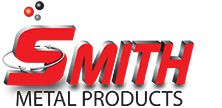MIM Costs
Typical Project Costs
Cost analysis is an important aspect of engineering design. One approach is to send out a component design and solicit responses from vendors. That usually results in a large variation in estimated quotes.
In MIM, the approach to estimate component cost is to sum the costs accumulated at each manufacturing step, starting with tool fabrication and extending to secondary operations and final inspection. The increments are as follows:
- Tool cost
- Feedstock cost (powder, binder, mixing or purchased feedstock)
- Unit fabrication costs (mixing, molding, de-binding, sintering)
- Secondary, finishing, inspection, and packaging costs
- Facility overhead burden
- Profit, tax, interest, and risk aversion.
Costs depend on design factors such as part complexity, material selection, and component size. The estimation procedures for tool cost are well established in plastic injection molding, providing a sound basis for MIM.
Raw material cost is dominated by the alloy. Polymers used as binders tend to be a low cost factor and final price is nearly insensitive to the polymer formulation. Unit costs in molding, de-binding, and sintering depend on the facility and installed equipment; generally these costs are based on an hourly rate, so less cost is accumulated if each step is performed quickly, an advantage to small and thin shapes.
The secondary operations can be performed internally or by outside vendors, and MIM has no advantage in this regard.
For the core manufacturing steps, unit operation calculations are developed for each step to accumulate a total fabrication cost. Although there are recognized differences in all cost factors, including labor, interestingly labor is not a dominant factor; MIM succeeds in both expensive and low labor cost regions (typically labor content in final part cost is under 10%).
